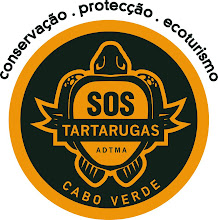A new study by Natura 2000, our Capeverdian Sea Turtle Network colleagues based on Boa Vista gives us new information about the genetic makeup of the turtles reproducing in our area and more information about where juveniles go after being born here.
"In the study we clearly demonstrate that loggerhead Cape Verde population is genetically different form the rest of relevant loggerhead populations of the Atlantic. Moreover, this population has a high genetic heterogeneity that should be especifically preserved, but we have no found differences among several islands from Cape Verde, indicating a significant genetic flux within the Archipelago.
Moreover, we have found juveniles form Cape Verde in all the Macaronesian islands (Canarias, Madeira, Azores) an the spanish coast including the Southwest Mediterranean (Andalucia, Baleares). In these areas near half of juveniles from Cape Verde may feed and growth until sexual maturation when they return to Cape Verde. However, we still do not know the destiny of a significant part of juveniles hatched in Cape Verde."
Subscribe to:
Post Comments (Atom)







No comments:
Post a Comment